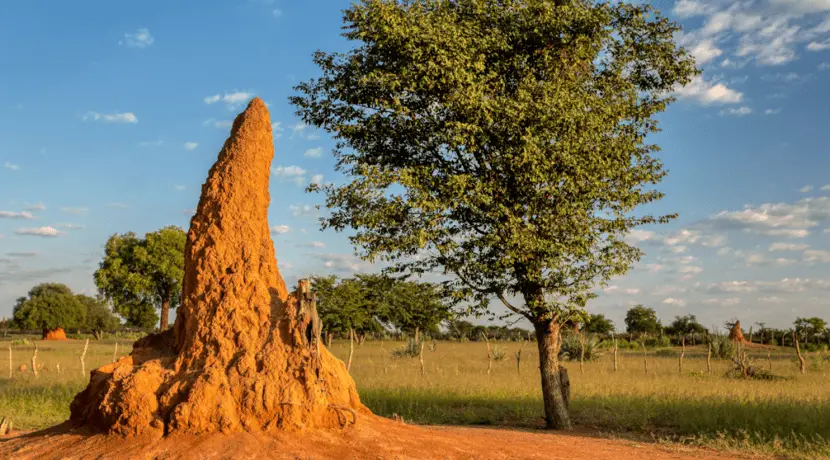Earth’s oldest active termite mound discovered in South Africa
34,000 years June 25, 2024 2:25 p.m. Robert Klatt The world’s oldest active termite mound has been discovered in South Africa. Termite structures are older than the cave paintings of Europe and were created when large ice sheets covered the Northern Hemisphere. The results of termite mound analysis can help fight climate change. Stellenbosch (South […]

34,000 years
Robert Klatt
The world’s oldest active termite mound has been discovered in South Africa. Termite structures are older than the cave paintings of Europe and were created when large ice sheets covered the Northern Hemisphere. The results of termite mound analysis can help fight climate change.
Stellenbosch (South Africa). Termite mounds of the southern crop termite (Microhodotermes viator) can live to old age. Researchers from Stellenbosch University (SU) led by Dr. Michele Francis have discovered the world’s oldest inhabited termite mound along the Buffels River in Namaqualand. According to their publication in the specialized magazine Total Environmental Science The termite mound is around 34,000 years old, is still inhabited by termites and can provide science with valuable information about prehistoric life, climate change and the Earth’s carbon cycle.
“Recent radiocarbon dating has revealed that these mounds are far older than any previously known, with some dates going back as far as 34,000 years – older than Europe’s iconic cave paintings and even older than the Last Glacial Maximum, when large ice sheets formed one covered much of the northern hemisphere.
Radiocarbon dating of the organic carbon from the termite mound indicates that it is between 13,000 and 19,000 years old. However, the carbonate in the termite mound is approximately 34,000 years old, making South Africa’s termite mounds the oldest active termite mounds on the planet. The oldest known termite mound is in Brazil and is around 4,000 years old.
“To put this in perspective, these termite mounds were already ancient when woolly mammoths still roamed the earth. During the Last Glacial Maximum, around 20,000 years ago, huge ice sheets covered parts of North America, Europe and Asia. These hills were then thousands of years old and constitute a living archive of the environmental conditions that have shaped our world.
Information about the Earth’s prehistoric climate
According to researchers, South Africa’s ancient termite mounds provide valuable information about Earth’s prehistoric climate and show that there was much more rain in the region when they formed than today. This wetter climate allowed minerals such as calcite and gypsum to dissolve and seep into groundwater. This process is crucial for understanding natural carbon storage processes.
“Discovering these mounds is like reading an ancient manuscript that changes everything we thought we knew about history. Their age and the knowledge they provide about ancient ecosystems make them candidates for global recognition as a natural wonder.
CO₂ storage mechanisms
In addition, ancient termite mounds reveal two CO₂ storage mechanisms. On the one hand, termite harvesting activities inject younger organic matter deep into their nests, leading to continued turnover of important soil carbon reservoirs at depth, where they are retained longer than at the surface. On the other hand, these calcareous termite mounds provide a means of removing CO₂ when the mineral calcite in the soil dissolves. This represents long-term carbon storage that businesses want to emulate to reduce their carbon footprint.
“By studying these hills, scientists can better understand how to combat climate change by harnessing natural processes to store carbon. They also highlight the importance of protecting our natural world, as these tiny engineers have been shaping our environment for tens of thousands of years.
Total Environmental Science, doi: 10.1016/j.scitotenv.2024.171760














